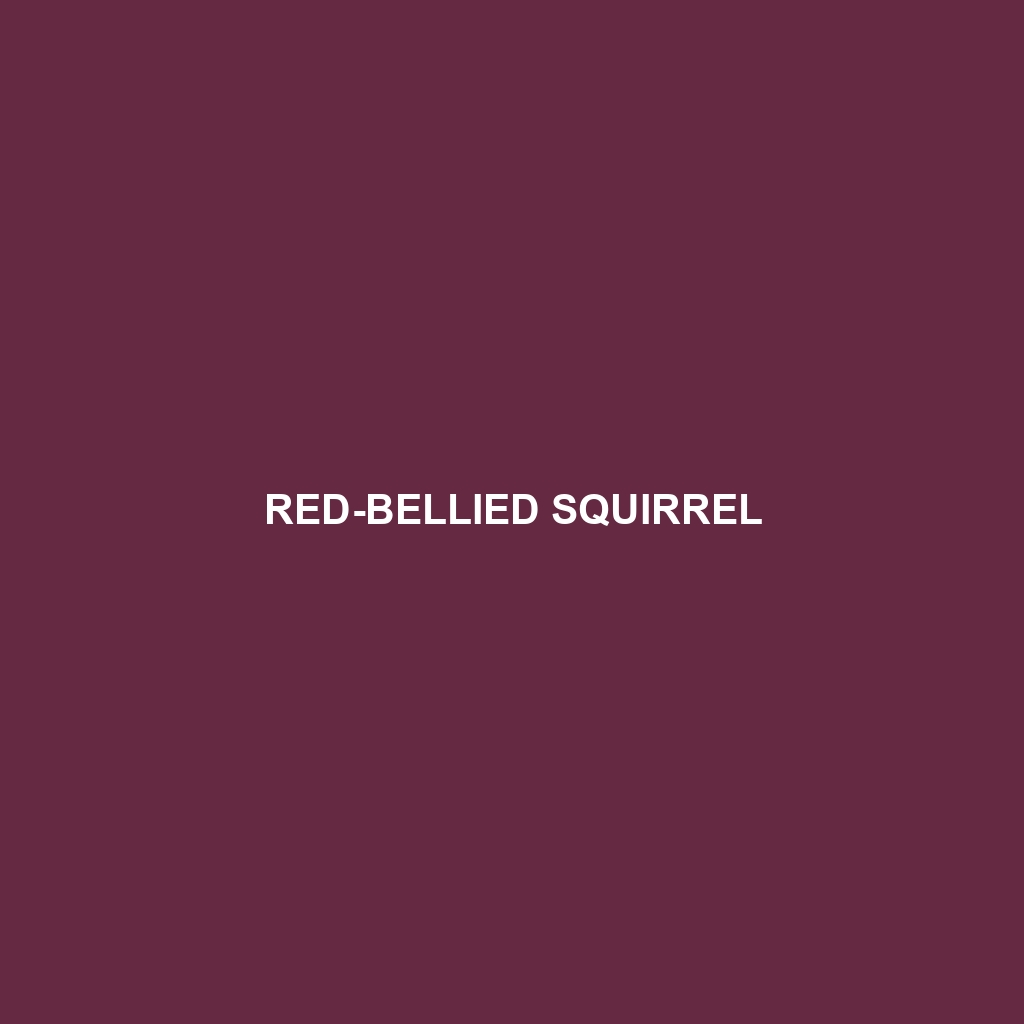Red-bellied Squirrel: Species Description
Common Name: Red-bellied Squirrel
Scientific Name: Callosciurus erythraeus
Habitat
The Red-bellied Squirrel is primarily found in Southeast Asia, particularly in countries such as Thailand, Malaysia, and Indonesia. This species prefers tropical and subtropical forests, including deciduous, evergreen, and humid montane forests. They are often seen in urban parks and gardens where adequate trees and food sources are available.
Physical Characteristics
Red-bellied Squirrels are medium-sized rodents, measuring approximately 22 to 25 centimeters in body length, with a tail that is slightly longer than their body. Their defining feature is their reddish-brown fur, which transitions into a lighter colored belly. They have large, expressive eyes and a distinctive bushy tail that aids them in balance when navigating trees. Their agile body shape allows for quick movements among branches.
Behavior
These squirrels are predominantly diurnal, being most active during the day. They are known for their lively and playful behavior, often engaging in acrobatic displays on branches. Red-bellied Squirrels are also social creatures, frequently seen in small groups. They communicate through various vocalizations and scent markings, contributing to their social hierarchy.
Diet
The diet of the Red-bellied Squirrel consists mainly of fruits, nuts, seeds, and occasionally insects. They are known to forage for food in tree canopies and are particularly fond of ripe fruits such as figs and berries. Their opportunistic feeding habits allow them to adapt to changes in food availability, making them efficient foragers in their environment.
Reproduction
Red-bellied Squirrels typically breed twice a year, during the rainy seasons in their native habitats. After a gestation period of about 44 days, females give birth to litters ranging from one to four offspring. The young are born blind and are dependent on their mother for the first few weeks. As they grow, they begin exploring their surroundings, learning essential survival skills.
Conservation Status
Currently, the Red-bellied Squirrel is listed as Least Concern on the IUCN Red List; however, habitat loss and fragmentation pose potential threats to their populations. Conservation efforts aim to preserve their natural habitats and promote awareness of environmental impacts.
Interesting Facts
One fascinating fact about the Red-bellied Squirrel is its ability to leap distances of up to 10 feet between trees, making it one of the most agile squirrels in its range. They are also known to stash food in various locations, demonstrating a behavior called ‘caching’, which aids in their survival during food scarcity.
Role in Ecosystem
Red-bellied Squirrels play a significant role in their ecosystem as seed dispersers. By consuming fruits and nuts and later excreting the seeds, they contribute to the propagation of various plant species. This interaction is critical for maintaining biodiversity in their habitats, as their foraging habits help create new growth opportunities for plants and trees.
